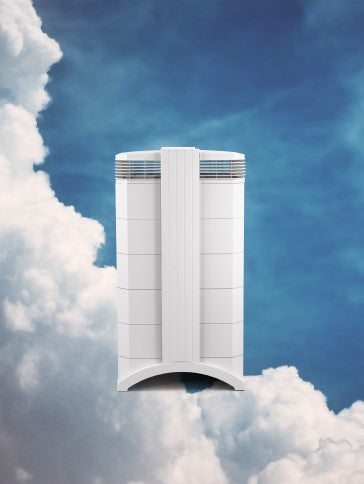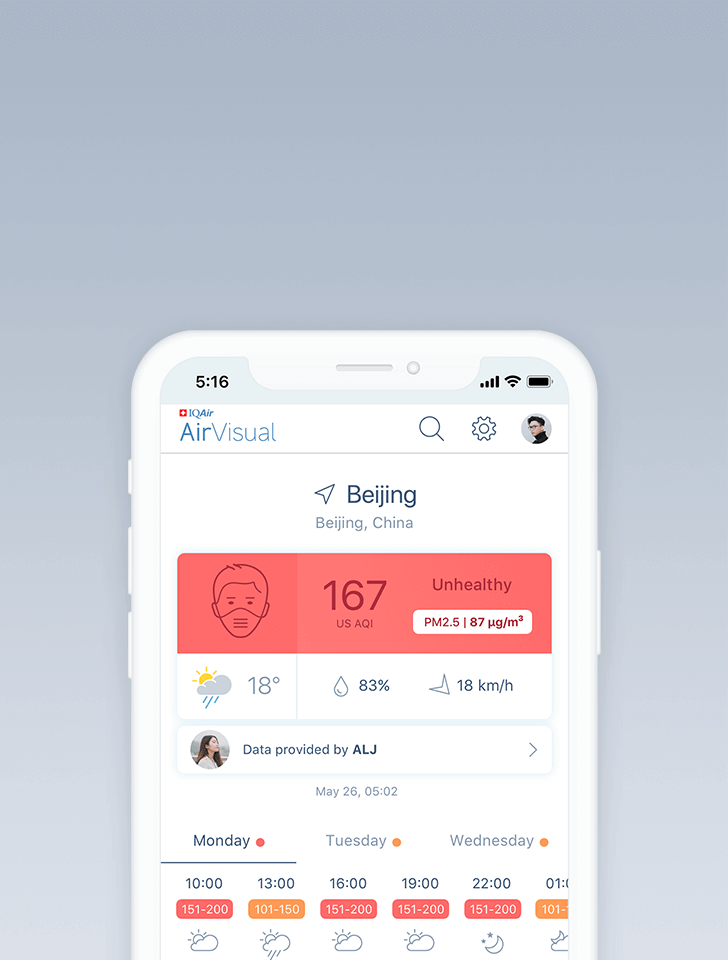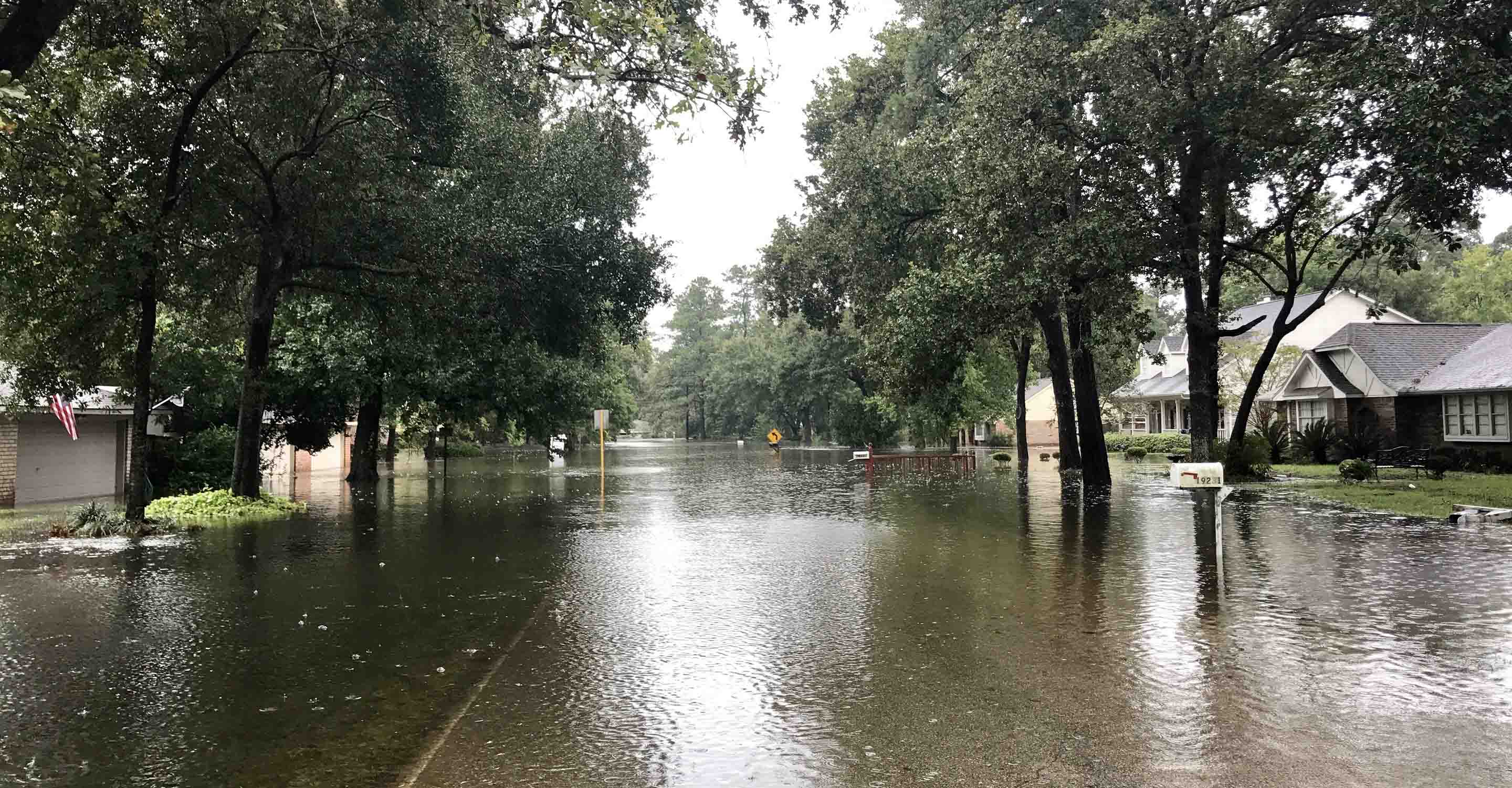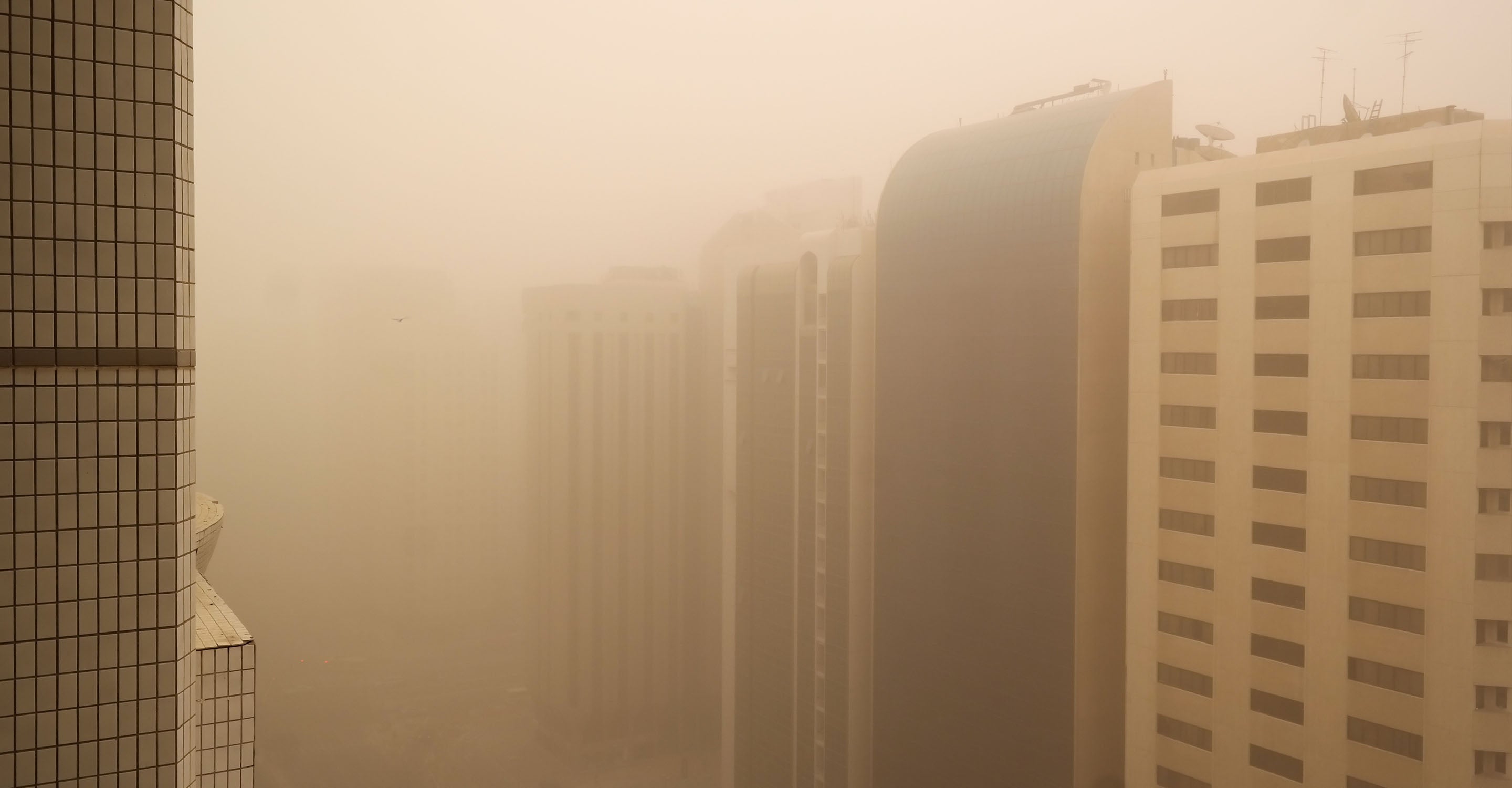Air quality in Xinxiang
Air quality index (AQI) and PM2.5 air pollution in Xinxiang
24.1K people follow this city

Xinxiang Air Quality Map
Real-time Xinxiang air pollution map
Weather
What is the current weather in Xinxiang?
| Weather | Broken clouds |
| Temperature | 73.4°F |
| Humidity | 14% |
| Wind | 15.9 mp/h |
| Pressure | 30 Hg |
live aqi city ranking
Real-time China city ranking
| # | city | US AQI |
|---|---|---|
| 1 |  Weifang, Shandong Weifang, Shandong | 869 |
| 2 |  Dongying, Shandong Dongying, Shandong | 675 |
| 3 |  Liaocheng, Shandong Liaocheng, Shandong | 675 |
| 4 |  Binzhou, Shandong Binzhou, Shandong | 599 |
| 5 |  Zibo, Shandong Zibo, Shandong | 560 |
| 6 |  Heze, Shandong Heze, Shandong | 554 |
| 7 |  Jinan, Shandong Jinan, Shandong | 529 |
| 8 |  Jining, Shandong Jining, Shandong | 444 |
| 9 |  Laiwu, Shandong Laiwu, Shandong | 426 |
| 10 |  Zhengzhou, Henan Zhengzhou, Henan | 384 |
(local time)
SEE WORLD AQI RANKING3D animated air pollution map

live Xinxiang aqi ranking
Real-time Xinxiang air quality ranking
| # | station | US AQI |
|---|---|---|
| 1 | Administrative Service Center | 464 |
| 2 | Environmental Protection West Hospital | 338 |
| 3 | He Normal University | 338 |
| 4 | Municipal government | 333 |
| 5 | Development zone | 272 |
| 6 | Environmental Protection East Hospital | 251 |
| 7 | Shiweidangxiao | 144 |
(local time)
SEE WORLD AQI RANKINGUS AQI
338
live AQI index
Hazardous
Overview
What is the current air quality in Xinxiang?
| Air pollution level | Air quality index | Main pollutant |
|---|---|---|
| Hazardous | 338 US AQI | PM10 |
| Pollutants | Concentration | |
|---|---|---|
| PM2.5 | 89µg/m³ | |
| PM10 | 455µg/m³ | |
| O3 | 81µg/m³ | |
| NO2 | 6µg/m³ | |
| SO2 | 8µg/m³ | |
| CO | 300µg/m³ | |
PM2.5
x17.8
PM2.5 concentration in Xinxiang is currently 17.8 times the WHO annual air quality guideline value
Health Recommendations
What is the current air quality in Xinxiang?
| Avoid outdoor exercise | |
| Close your windows to avoid dirty outdoor air GET A MONITOR | |
| Wear a mask outdoors GET A MASK | |
| Run an air purifier GET AN AIR PURIFIER |
Forecast
Xinxiang air quality index (AQI) forecast
| Day | Pollution level | Weather | Temperature | Wind |
|---|---|---|---|---|
| Wednesday, May 8 | Moderate 96 AQI US | 86° 59° | ||
| Thursday, May 9 | Moderate 90 AQI US | 89.6° 62.6° | ||
| Friday, May 10 | Unhealthy for sensitive groups 112 AQI US | 91.4° 62.6° | ||
| Today | Hazardous 338 AQI US | 84.2° 66.2° | ||
| Sunday, May 12 | Moderate 80 AQI US | 87.8° 59° | ||
| Monday, May 13 | Moderate 84 AQI US | 93.2° 60.8° | ||
| Tuesday, May 14 | Unhealthy for sensitive groups 103 AQI US | 98.6° 68° | ||
| Wednesday, May 15 | Unhealthy for sensitive groups 118 AQI US | 86° 68° | ||
| Thursday, May 16 | Unhealthy for sensitive groups 102 AQI US | 86° 59° | ||
| Friday, May 17 | Unhealthy 155 AQI US | 98.6° 64.4° |
Interested in hourly forecast? Get the app
How to best protect from air pollution?
AIR QUALITY ANALYSIS AND STATISTICS FOR Xinxiang
What is the level of air pollution in Xinxiang?
Xinxiang is a prefecture-level city in northern Henan province, China. As such, it administers 4 districts, 3 county-level cities and 5 counties. In a 2010 census, the population was estimated to be 5.7 million out of which 2.6 million were seen to be living in the metropolitan areas. This figure will now be considerably more. Some of the key industries here are textiles and food processing. It also has many heavy industries involved in machine making. Tying in with the textile industry, Xinxiang also has a well-developed cotton industry.
During the second quarter of 2021, Xinxiang was experiencing a period of air quality that was classed as being “Unhealthy for sensitive groups” with a US AQI reading of 127. This United States Air Quality Index figure is an internationally recognised standard by which air pollution can be compared under similar circumstances. It also follows guidelines from the World Health Organisation (WHO).
There are often six main pollutants that are measuring and used as a benchmark when comparing like for like. The recorded concentration levels of the pollutants in Xinxiang were as follows: PM2.5 - 46 µg/m³, PM10 - 87 µg/m³, ozone (O3) - 74 µg/m³, nitrogen dioxide (NO2) - 18 µg/m³, sulphur dioxide (SO2) - 8 µg/m³ and carbon monoxide (CO) - 450 µg/m³. When concentrations are at this level, the advice given is to stay at home and close doors and windows to prevent more dirty air from entering the rooms. Those people who are extra sensitive to air pollution should avoid going outdoors until the situation improves. The current state of the air can be found at the top of this page.
Does the level of air pollution in Xinxiang remain constant throughout the year?
Air pollution can and is affected by many variables and, as such, can easily change over the course of a day let alone longer.
The figures have now been released by the Swiss monitoring company IQAir for 2020. It can be seen that the air quality varies according to the seasons of the year. The period of time for the cleanest air was during the warmer summer months from May until the end of September when the quality was classed as being “Moderate” with figures between 12.1 and 35.4 µg/m³. Late winter and early spring saw a decline in quality with a classification of “Unhealthy for sensitive groups” when figures were between 35.5 and 55.4 µg/m³. The worst air quality could be found during the cold winter months from October until the end of January when the air quality was classified as being “Unhealthy” with readings between 55.5 and 150.4 µg/m³.
Records have been kept since 2017 when the average annual figure was 66.4 µg/m³. It can be seen that the air quality is slowly improving. In 2018 the mean figure was 61.4 µg/m³ before dropping yet again to 55.7 µg/m³ in 2019. Another reduction was recorded for 2020 with a 51.5 µg/m³ reading. This figure could be artificially low though because of the COVID-19 pandemic when travel was restricted and some industrial activity was halted in order to prevent the spread of the virus.
What is the source of air pollution in Xinxiang?
As is the case with most large cities throughout the world, the main source of air pollution comes from industrial emissions, exhaust fumes from vehicles and dust blown in from neighbouring areas.
PM10 pollution occurs everywhere during strong winds, and the dust pollution in the upstream area will aggravate the pollution in the downstream area. At the same time, the high-altitude floating dust generated seriously affects the air quality of the entire region. Once the wind speed or direction changes it can radically alter the level of air pollution and because it is a natural occurrence, nothing much can be done to stop it.
Farmland controlled by the municipality was also noted for heavy metal contamination by leading China news site Caixin, as the epicentre of Chinese battery (nickel cadmium) producers.
For ozone pollution control, Xinxiang City will mainly take the following measures: launch a large publicity campaign to make residents aware, large-scale investigation and large-scale rectification of special actions. Carry out special rectification for the detected industrial process exhaust gas, motor vehicle exhaust, catering oil fume, gas station, construction site and road dust, etc.; carry out special treatment actions for ozone pollution, implement comprehensive VOCs management, and guide the green development of enterprises; strengthen navigation.
What can be done to lower the level of air pollution in Xinxiang?
People-orientated, prevention first. Regarding the protection of the people’s health as the main reason for dealing with heavily polluted weather, strengthen daily monitoring and management, focus on improving the ability to respond to heavily polluted weather, ensure that the emission of various pollutants reaches the corresponding emission reduction ratio, and effectively exert the emission reduction effect to the greatest extent in order to mitigate the harm caused by heavily polluted weather.
Scientific early warning and timely response. Strengthen the monitoring of air pollution sources, accurately grasp the changing trend of atmospheric environmental quality, establish and improve the monitoring and early warning, consultation and judgment, emergency response, supervision and scheduling mechanism of heavily polluted weather and actively and effectively respond to the situation.
What effects does heavily polluted air in Xinxiang have on human health?
The harm caused by air pollution to the human body has been widely known, but recently there is new evidence that the harm caused by pollution to the human body is more serious than previously known, especially to children.
The most obvious of pollution is the impact on the respiratory system, which makes those with asthma particularly vulnerable.
Air pollution can exacerbate other respiratory diseases, including emphysema and chronic bronchitis. At the same time, studies have shown that lung cancer is also related to air pollution.
When harmful particles suspended in the air enter the lungs of the human body through the respiratory tract, they reach the alveoli, and then are transported to the whole body as oxygen enters the blood system.
It is currently known that PM2.5 particles are small enough to enter the cardiovascular system and circulate in the human body. This means that it may block arteries and increase the risk of stroke and heart disease. Not only that, there is evidence that these particles may reach the brain, so researchers are investigating the effects of pollution on dementia (commonly known as Alzheimer's disease).









